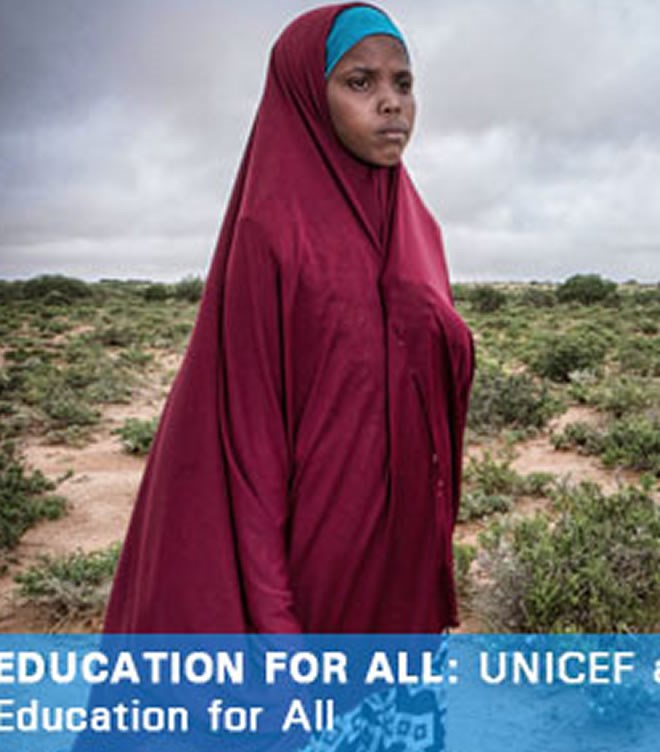
MOGADISHU, 28 June 2016 – UNICEF has called for work on implementing human rights for all Somali children to be prioritized after Somalia ratified the Convention on the Rights of the Child last year.
This comes as UNICEF publishes its annual flagship report The State of the World’s Children which this year focuses on the plight of the most disadvantaged children in the world.
“We call on everyone in the country who cares about the future of Somalia- governments, donors, civil society organisations, community leaders, mothers and fathers- to unite their efforts for the most vulnerable children and those children most difficult to reach,” said Jeremy Hopkins, UNICEF Representative, a.i. “These children may be living in inaccessible rural areas, displacement camps, they may be members of minority groups or have specific and special needs. We need to reach all children but it is for these most vulnerable of children that we really must work together.”
The State of the World Children’s report found that Somalia is highly unlikely to reach the Sustainable Development Goal of cutting under five year old mortality by the target date of 2030 unless more is invested in the future of the disadvantaged.
“All the children in Somalia deserve the opportunity to go to school, to be healthy, have clean water and be protected from abuse or being forced to join armed groups,” said Peter de Clercq, the United Nations Resident and Humanitarian Coordinator for Somalia. ”The Somali authorities demonstrated their commitment to children and young people by ratifying the Convention on the Rights of the Child and we are providing support to make this a reality.”
The State of the World’s Children report shows that globally there has been some progress in saving children’s lives, getting children into school and lifting people out of poverty. In Somalia the number of children who die before their fifth birthday has dropped from 180 per 1000 live births in 1990 to 137 in 2015.
But such progress is usually neither even nor fair, the report says. The poorest children are twice as likely to die before their fifth birthday and to be chronically malnourished than the richest. Across much of South Asia and sub-Saharan Africa, children born to mothers with no education are almost 3 times more likely to die before they are 5 than those born to mothers with a secondary education. And girls from the poorest households are twice as likely to marry as children than girls from the wealthiest households.
The report points to evidence that investing in the most vulnerable children can yield immediate and long-term benefits. On average, each additional year of education a child receives increases his or her adult earnings by about 10 per cent. And for each additional year of schooling completed, on average, by young adults in a country, that country’s poverty rates fall by 9 per cent.
Inequity is neither inevitable, nor insurmountable, the report argues. Better data on the most vulnerable children, integrated solutions to the challenges children face, innovative ways to address old problems, more equitable investment and increased involvement by communities – all these measures can help level the playing field for children.